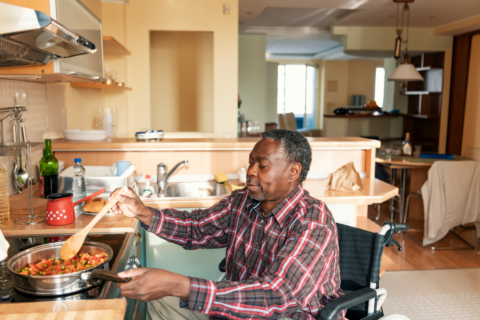With increasing demand for rental housing and rising rents across the country, it can be helpful to residents for cities, towns, and villages to create and support programs that assist renters in accessing safe and healthy housing.
The rental housing landscape is changing – both in terms of housing supply and renter demographics:
- The share of older renters (age 65 and over) is growing rapidly. Between 2009 and 2019, the number of renter households headed by a person age 65 and over increased by 43 percent.
- Black households are more likely to rent their housing, with 58 percent of Black households renting their housing in 2019 compared to 28 percent of White households. Comparatively, 52 percent of Hispanic households, 43 percent of American Indian/Alaskan Native households, and 39 percent of Asian households rented their housing.
- Women make up a greater share of renters than men. They are more likely to spend a significant share of their income on rent, with almost half (45.4 percent) of female-headed renter households being rent burdened, compared to roughly a third (36.1 percent) of male-headed renter households.
- The number of low-cost units has dramatically declined; units costing less than $600 per month fell by 3.9 million between 2011 and 2019.
- The COVID-19 pandemic caused spikes in unemployment and financial insecurity, threatening a surge in eviction filings across the country. Local, state, and federal-level eviction moratoria provided relief from immediate eviction during the COVID-19 pandemic. But as COVID-era protections and emergency rental assistance programs run out and rents climb, eviction filings have been rebounding and trending toward increases in eviction filing rates across the board.
What are Cities Doing to Address this Issue?
Madison, Wisconsin
Madison, Wisconsin is home to the Tenant Resource Center (TRC), a non-profit membership organization funded in-part by the City of Madison. The TRC’s mission is to advocate for housing justice and thriving communities through providing education and centering community partnerships. Acting as a community resource to support tenants in Dane County, the TRC provides a wide variety of tenant resources such as information on community resources and housing counseling services for renters experiencing housing issues (e.g., apartment safety, discrimination, eviction, rent payment, etc.). Additional tenant resources provided by TRC include the Eviction Prevention Coordinated Entry Screening and Housing Mediation Services to facilitate conversations and agreements between tenants, landlords, and eviction court
New Orleans, LA
New Orleans, Louisiana has implemented a Tenant Eviction Assistance Program and right to counsel to provide legal counsel as a matter of right to residential tenants facing eviction proceedings within the city and to provide housing-related advocacy for tenants. Specifically, the right to counsel ordinance states that anyone at risk of losing their home in eviction court has the right to an attorney and creates a permanent framework for the program, which the council established in 2021 when it was appropriated $2 million to support eviction defense work. The ordinance created reporting requirements to track efficacy and provides assurance that the program will continue to exist in the future, facilitating the hiring of new staff.
Toledo, OH
Toledo, Ohio is one of many cities across the country that have implemented just cause (or “good cause”) eviction policies. Just cause policies limit the grounds upon which a landlord can evict a tenant by protecting tenants from arbitrary, retaliatory, or discriminatory eviction. Just cause eviction laws aim to help renters by providing a sense of stability to tenants, preventing evictions for no fault of their own, discouraging self-evictions, and empowering tenants experiencing poor living conditions and illegal landlord behavior to advocate for improvements without fear of retaliation.
To learn more about how to develop or refine your local eviction prevention strategy, read NLC’s Eviction Prevention: A Guide for Local Governments.
Next Steps for Cities
As cities across the country continue to develop programs and policies for renters, there are important considerations to be made to better support renter households:
- Improve local capacity for data collection of housing access and eviction rates. The U.S. government collects almost no eviction data; 38 percent of rural, 30 percent of suburban, 30 percent of exurban and 22 percent of urban city officials surveyed did not know whether evictions have increased or decreased from the previous year.
- Fund programs to provide tenants with resources such as emergency rental assistance, mediation services and housing counseling services. These programs and resources can help tenants know their rights and reduce housing discrimination.
- Expand protections for tenants facing eviction (e.g., just-cause eviction policies, right to counsel, etc.)
- Work with courts to ensure tenants facing eviction have access to supportive services such as mediation as part of court procedures.
Learn More
Explore the Eviction Prevention Policy & Program Tool to learn more about the local eviction prevention landscape in the U.S. Interested in becoming an NLC member? Click the button and join today!










